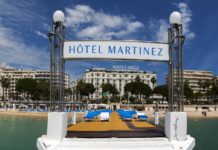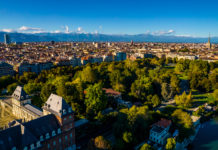Pacific (Weltexpress). Sailing with Lindblad Expeditions and National Geographic is not a cruise. It is an expedition. In fact, our contributors Peter Hanneberg and Sandy Eime met on a Lindblad ship in the romantic Pacific. They fancy the concept of high-standard small ships, sailing for remote coasts and far-flung islands in all climate zones. Enjoy their story about the National Geographic Orion sailing the South Seas with less than a hundred guests.

The South Seas! Lindblad Expeditions brings a smaller number of guests closer to wildlife and culture than any big ships would manage. And they take us to the islands’ historic hotspots. In Tahiti, the National Geographic Orion glides past the lighthouse at Point Venus in Matavai Bay, from where James Cook observed in 1769 planet Venus eclipsing the sun. We anchor at the island of Moorea, in the beautiful Opunohu Bay where Cook lay in 1777 with HMS Resolution and HMS Discovery.

Bora Bora’s natural beauty has become the very emblem of the romantic South Seas. The volcano Otemanu protrudes from the middle of the spectacular lagoon like the dorsal fin of a monster shark. The island is French Polynesia’s strongest magnet for ordinary tourists, celebrities and honeymooners alike. Eighteen months after Lindblad’s expedition, we return on our own trip, to do a report and experience a slightly deeper side of Bora Bora’s famous romance. Our conclusion is that the atoll indeed deserves its reputation.

NG Orion sails from Fiji to Tahiti for almost three weeks and drops anchor at islands and atolls that you would never get to otherwise. On the “garden island” Taveuni in Fiji, we visit the ecovillage Waitabu, which in the old way knocks out bark fabric against rocks, and wisely protects its marine environment. In Bouma National Heritage Park we swim next to the beautiful waterfalls. In the mountains, NG Orion’s bird expert Richard White finds as many as 12 of Fiji’s 27 endemic bird species.
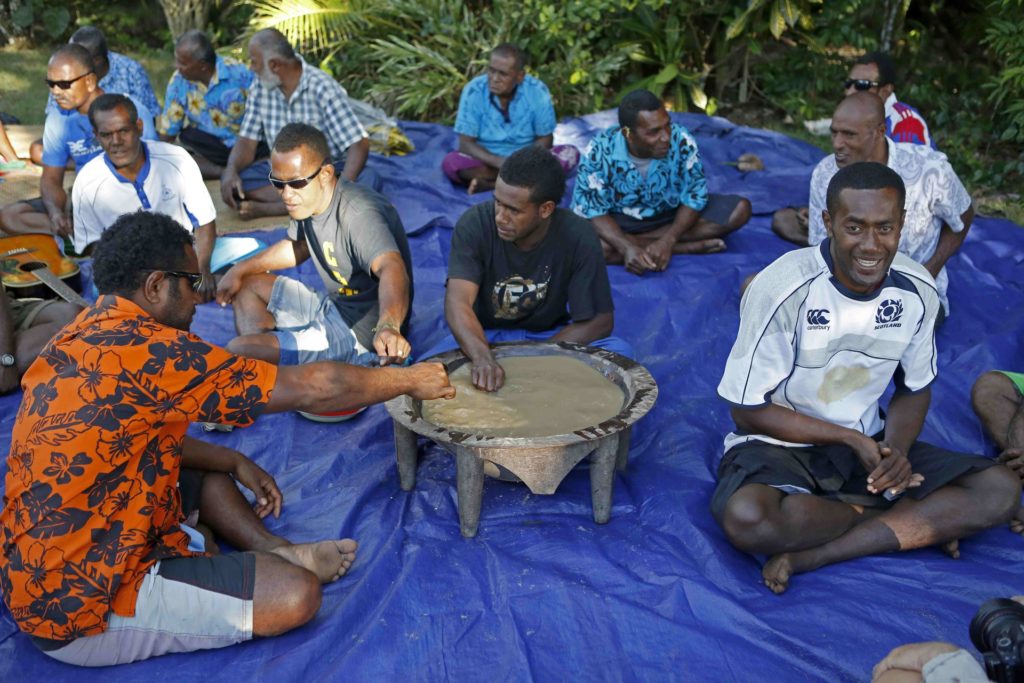
On the island of Beqa in Fiji, we drink the cloudy national drink kava with the village men. It is cooked on the roots of the kava plant, which gives it a bitter taste, but has a relaxing effect.
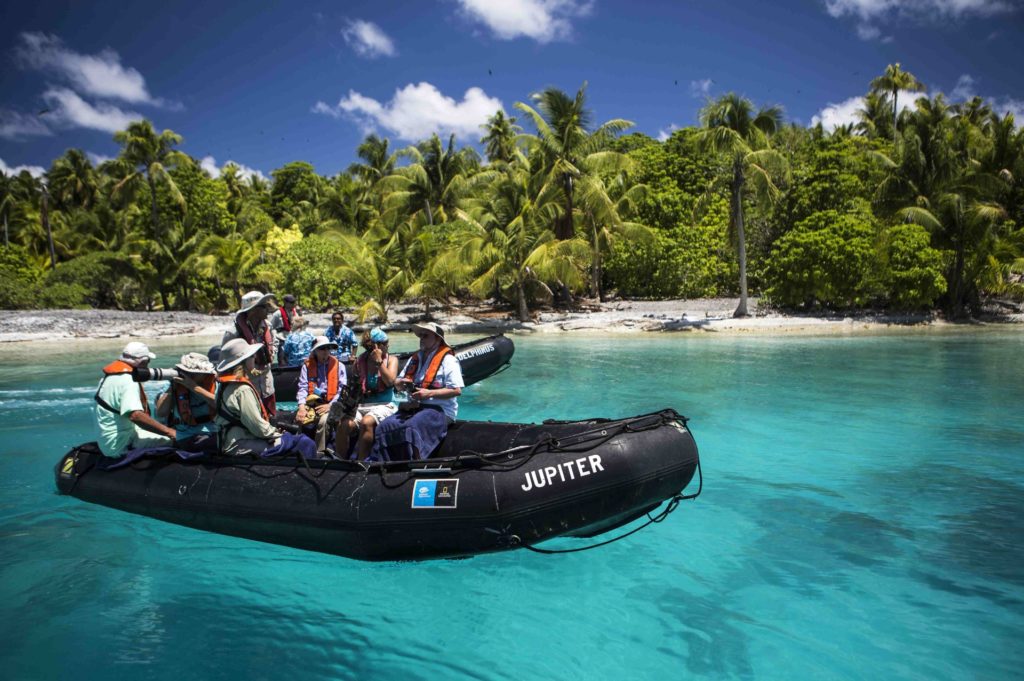
Our sailing from Fiji with NG Orion goes via Tonga and Samoa to the atolls Manihiki and Penrhyn in the Northern Cook Islands. In the atolls we meet isolated villages with beautiful people and lively bird islands. Everywhere we go, we cross the crystal clear waters with NG Orion’s flexible zodiacs.
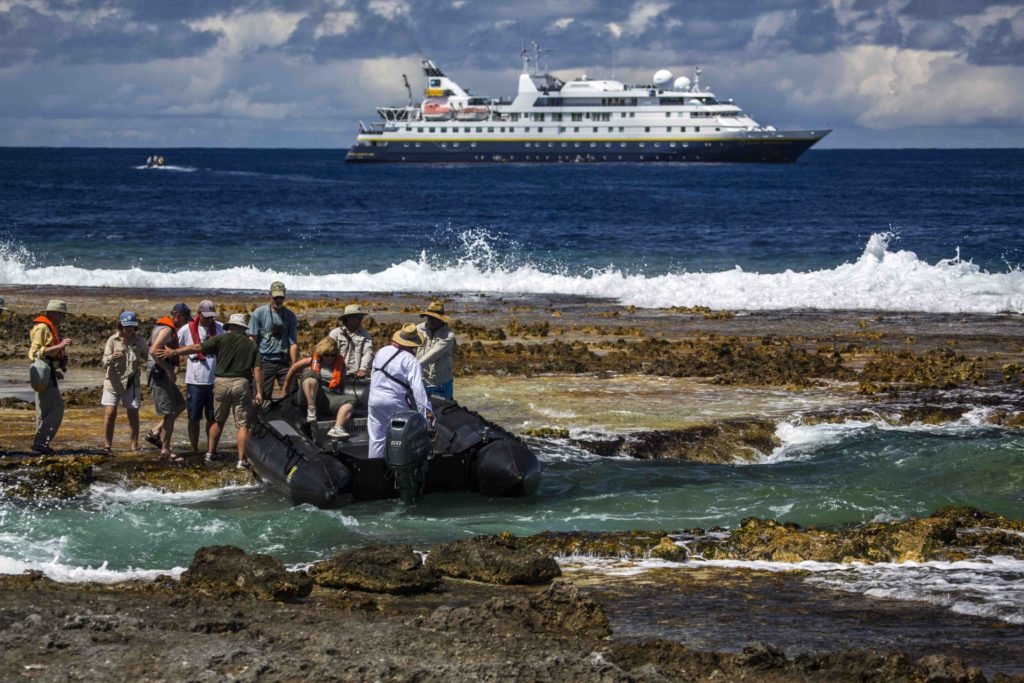
Then we head to Kiribati, where we first visit Flint Island. Strangely enough, Magellan managed to encounter only Flint Island and the small Puka-Puka during the long voyage that crossed the entire Pacific Ocean from Tierra del Fuego to Guam and the Philippines. At Flint it is dangerous to land, but the zodiac drivers find a small passage through the dangerous coral reefs.
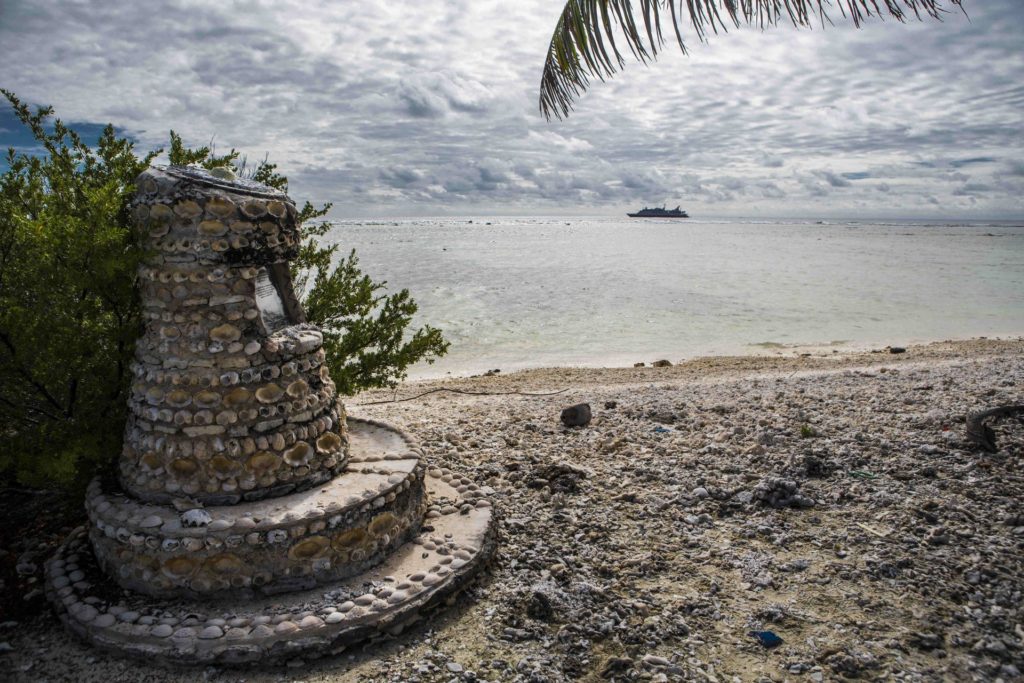
The uninhabited Millennium Atoll is located just west of the date line. That is, the one island that sees the sun rise before any other place on Earth. Every new day begins here! Weathered champagne bottles still remain after the New Millennium party 2000, half buried in the sand around the simple millennium monument of cement and seashells. Out there, beyond the reef, is NG Orion at anchor.
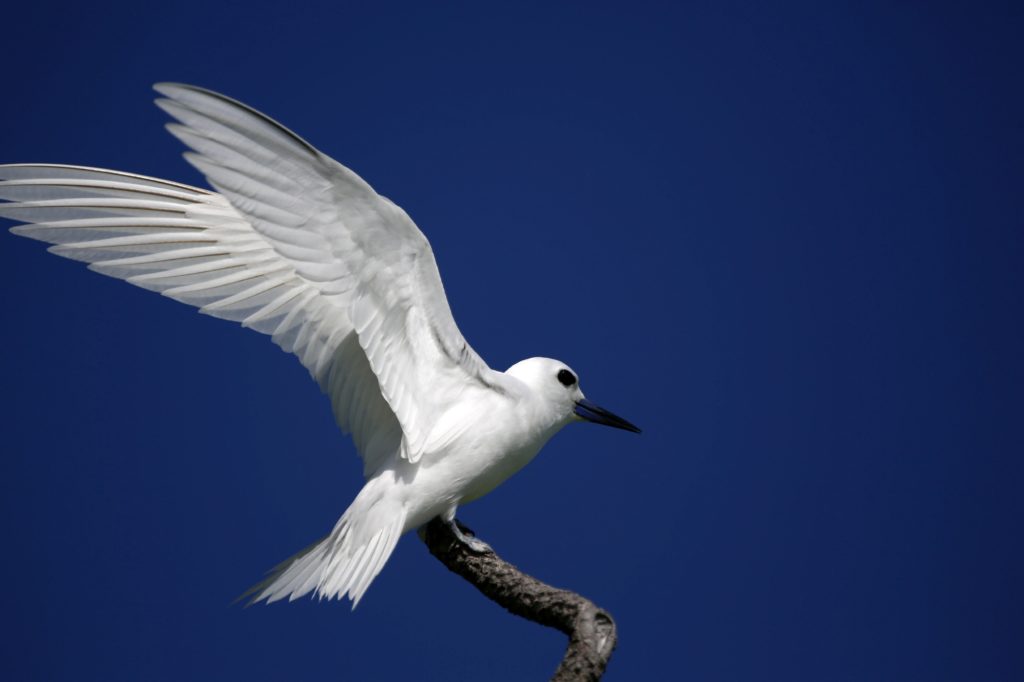
Several of Millennium Atoll’s islands are full of seabirds and their nests. The all-white Fairy tern is perhaps the most beautiful, graceful and sympathetic of all seabirds. It is distributed around the entire tropical belt.

A local girl on Fakarava dances for us on the beach, while NG Orion shines beautifully like a queen off the island. A barbeque lunch on deck is being prepared for our return. Among the islands of the Tuamotu Archipelago, we visit the elevated reef Makatea and the atolls Fakarava and Rangiroa, known for their pearl farms. These are the two largest atolls in French Polynesia.
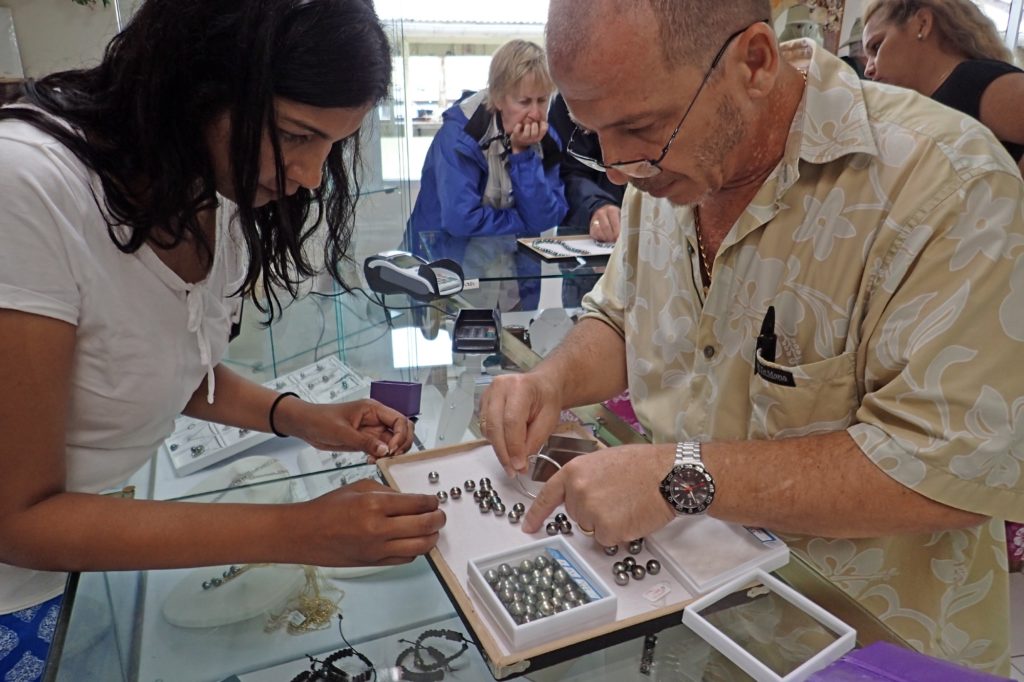
Before purchasing, we do some fine inspection of the farms’ own pearl shops in Rangiroa to find the right quality. Shape and luster can vary infinitely. After Rangiroa, we reach Papeete, the capital of Tahiti. There we rent a private guide by car that takes us up among the volcanic mountains, where the mutineers at HMS Bounty tried to hide in 1790.
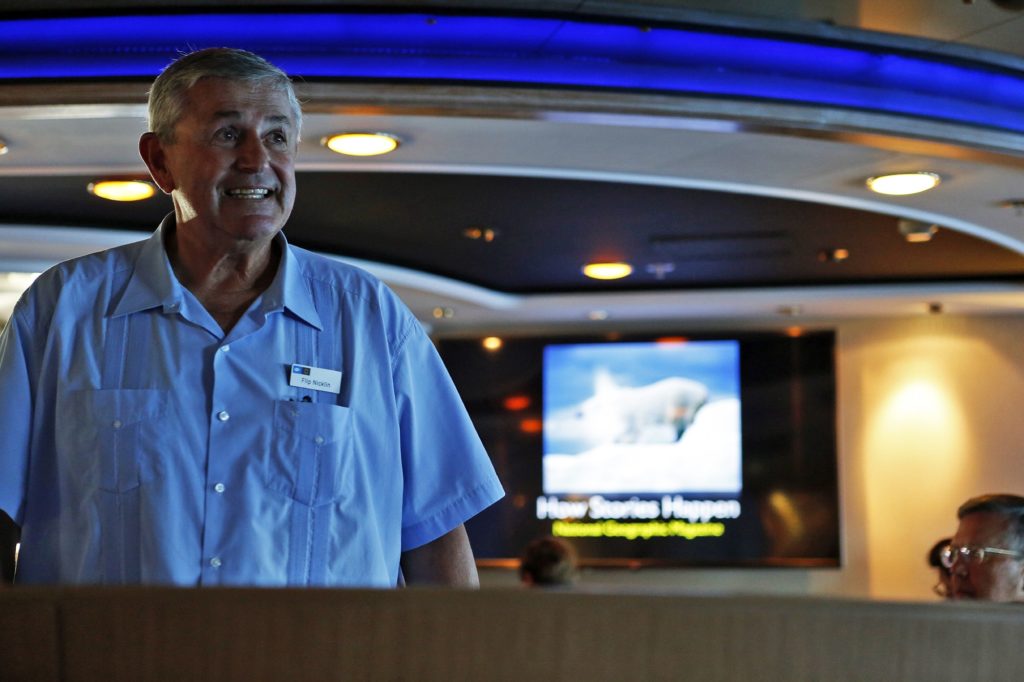
Marine photographer Flip Nicklin from National Geographic lectures on whales in the ocean. At NG Orion and all Lindblad’s expedition ships, nature guides and invited experts in nature, culture and history give lectures with pictures. Enlightened by new knowledge, we better understand what we encounter when we snorkel over reefs, climb mountains or meet people and cultures.

National Geographic participates in all Lindblad expeditions with at least one photographer. Several underwater experts are also on board. The divers return with new video material, which everyone can enjoy in the evening.
Before dinner, a “recap” is always held, where the day’s adventures are reviewed over a drink from the well-stocked bar. Lindblad’s concept is about small ships with rib boats, a concept that has since spread and become popular because it can get closer to the earth’s most exciting and remote natural and cultural wonders. The agile ship and the zodiac take us ashore on islands that no cruise ship can reach due to shallow bottoms and dangerous reefs.
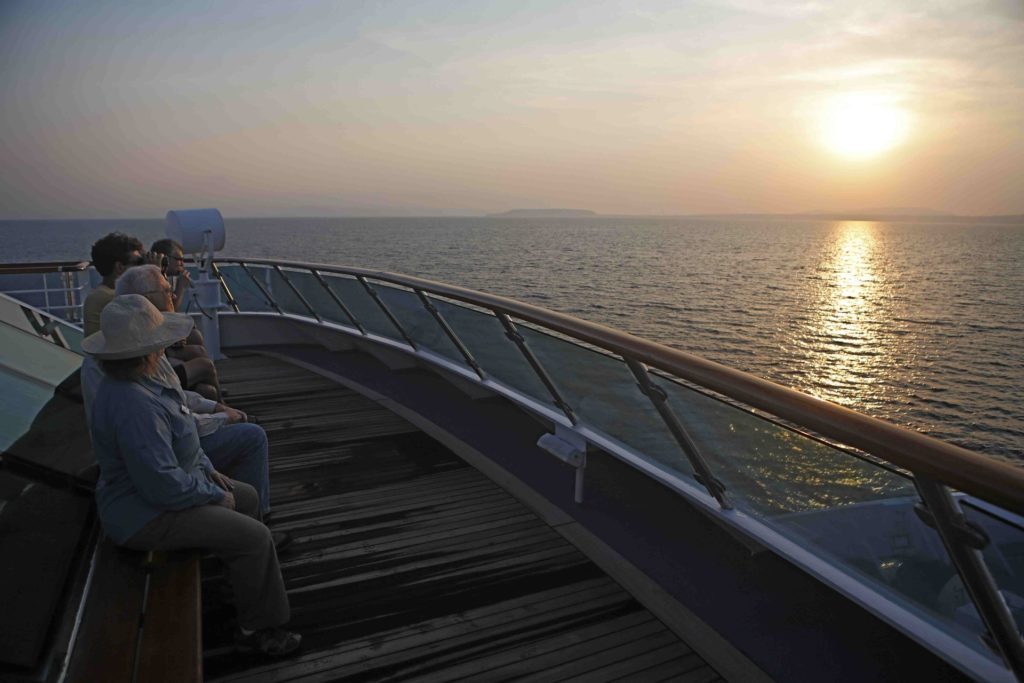
This is how the Lindblad-National Geographic expeditions continues. The longest distances are covered at night, but sometimes whole days pass without any land in sight. On such days at sea we are watching birds, dolphins, and great whales. Sitting in the library to read or go through pictures in the computers. Reading a book in the jacuzzi, in the fresh air on the deck, or comfortably in the lounge. Or listening to the lectures in the lounge, and we cannot miss any of them of the simple reason that they are all very interesting. There is also a mini gym and a sauna.

The meals are very generous and of a high standard. If the weather is nice, which is usually the case in the South Seas, the meals are eaten like a barbeque on the deck, otherwise down in the restaurant.

The cabins are beautiful, comfortable rooms for relaxation. You can also rest in your cabin during the lectures, as they are always displayed on the flat screen TV on the wall. Sometimes in port, local dancers come on board and demonstrate the island’s traditional dances. There’s always something to do on the Orion, as well as on Lindblad’s other expedition ships.
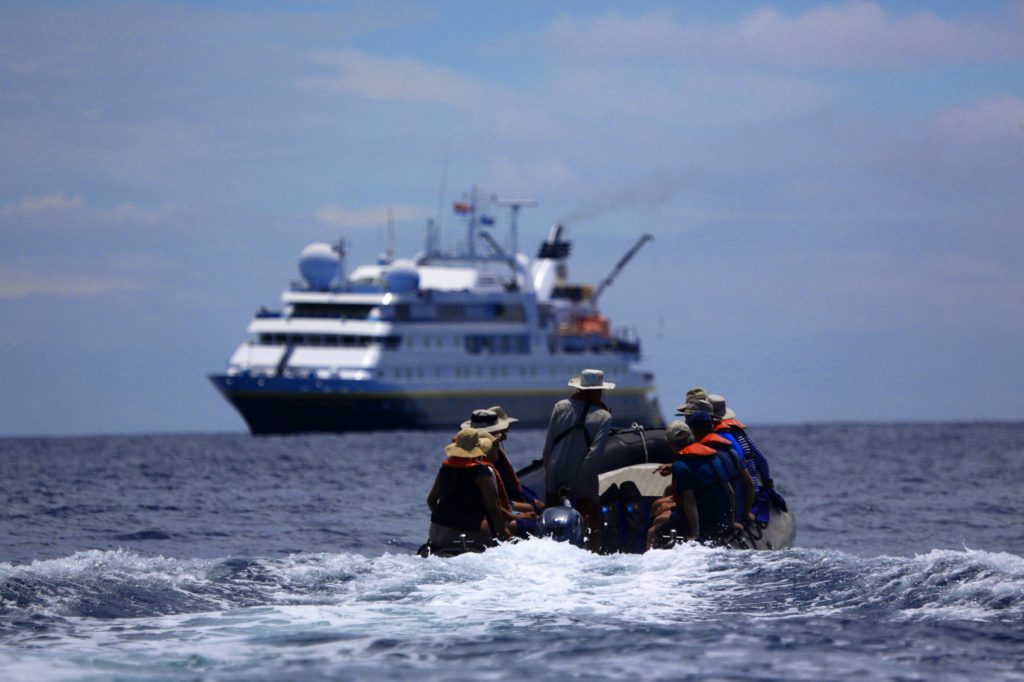
Protecting the environment, and inspiring people to explore and care about our planet, are every day-present goals in the Lindblad-National Geographic expedition concept. The pioneer behind expedition cruises was the Swedish-American Lars-Eric Lindblad. He started the era in 1969 with his ship Lindblad Explorer. It went all over the world, but became legendary for its pioneering travels to Antarctica. Today, his son Sven Olof Lindblad operates the growing fleet of ships. Since 2008, Sven has arranged all expeditions in close collaboration with National Geographic. With up to twelve steady zodiacs ready to be winched from the top deck down to the sea, there are no goals they can not meet.

Lars-Eric would be happy had he known that not only his son Sven, but now also his grandson Jeremy Lindblad, is involved in Lindblad Expeditions. The innovative family business is in its third generation. Now everyone is just waiting for the pandemic to let go. Lindblad invested a lot and had two new ships built just before Covid-19 broke out. We keep our fingers crossed for them.

Lindblad Expeditions
Adress: 96 Morton Street New York 10014, USA
Web: www.expeditions.com
Phone: +1.212.261.9000




